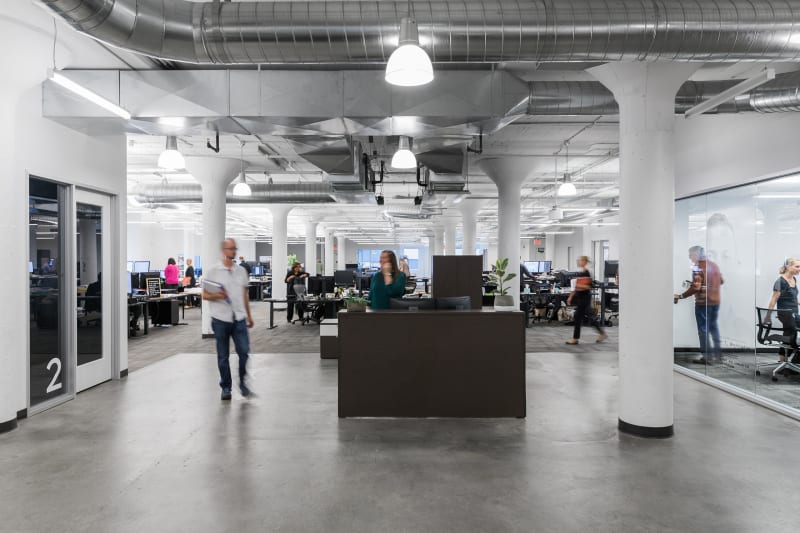“If I have seen further, it is by standing upon the shoulders of giants.” So wrote Sir Isaac Newton in a letter to fellow scientist Robert Hooke in February 1675. Even Newton, regarded as one of the greatest physicists and mathematicians of all time, understood the value of learning from predecessors and peers. And just as surely, those who have come after him have continued the cycle of discovery and invention founded on Newton’s giant leaps.
As designers of education facilities and space, we too value this process and implement it in our work. Moreover, we love working with school districts who share this approach. Oregon City School District is one such example. The District reimagined the middle school experience first by developing a project-based, student-centered curriculum. After passing a $158 million bond in November 2018, District leaders made a concerted effort to research and learn from other schools that had implemented similarly creative and innovative programs and facility designs to inform their approach for designing the new Gardiner and Tumwata Middle Schools.
A Journey of Discovery
As Oregon City’s architect for the new bond projects, we joined District personnel on school tours in January 2019. One of the innovative and compelling schools we visited was High Tech High, part of a network of 16 charter schools serving K-12 students in the San Diego area. High Tech High implements a project-based/deeper learning approach that incorporates design thinking—the process of planning, building, testing, and refining approaches in an iterative way. The model also provides opportunities for teachers and students to collaborate in a more hands-on way than traditional learning models support.
We learned so much at this school about ways we could advance the learning experience for Oregon City students and teachers. High Tech High’s building and interior spaces fully support the project-based learning model by intentionally creating student-focused areas. There are open spaces where students can curate and display their projects—developing a sense of pride and accomplishment and providing opportunities to inspire others. There are also small group learning and project areas where students and teachers can collaborate and learn with and from each other. Such spaces foster deeper connections and trusting relationships between students and adults, which enables more engaged learning as well as meaningful support in times of need.
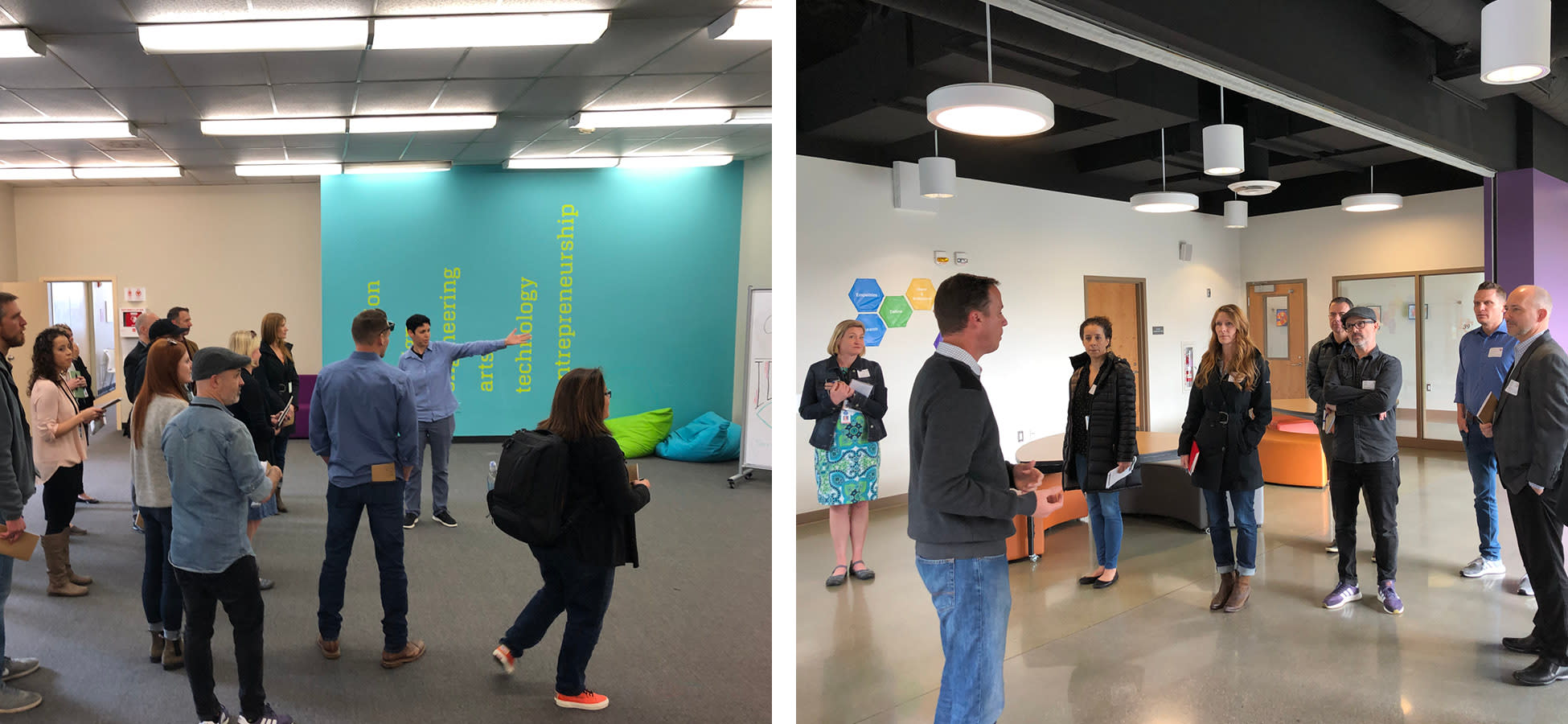
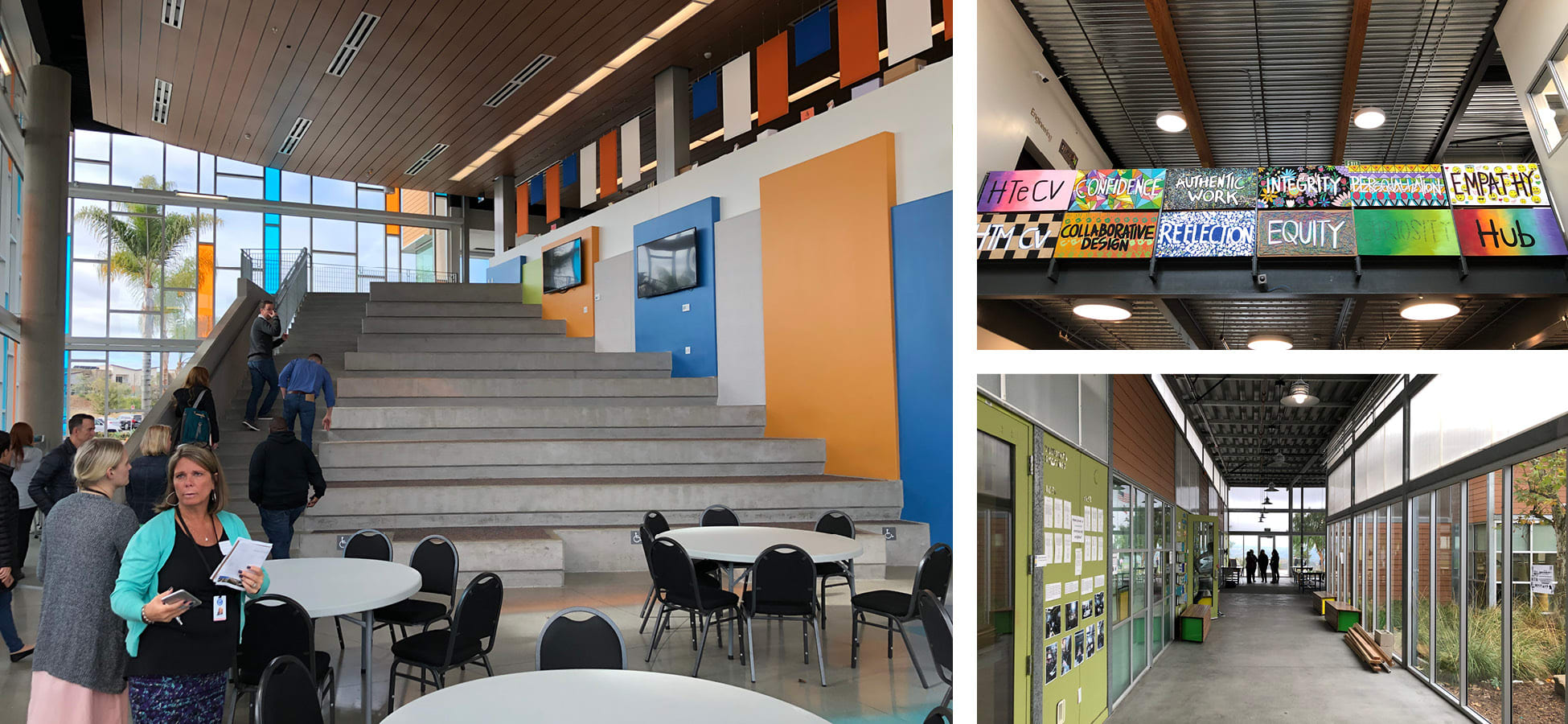
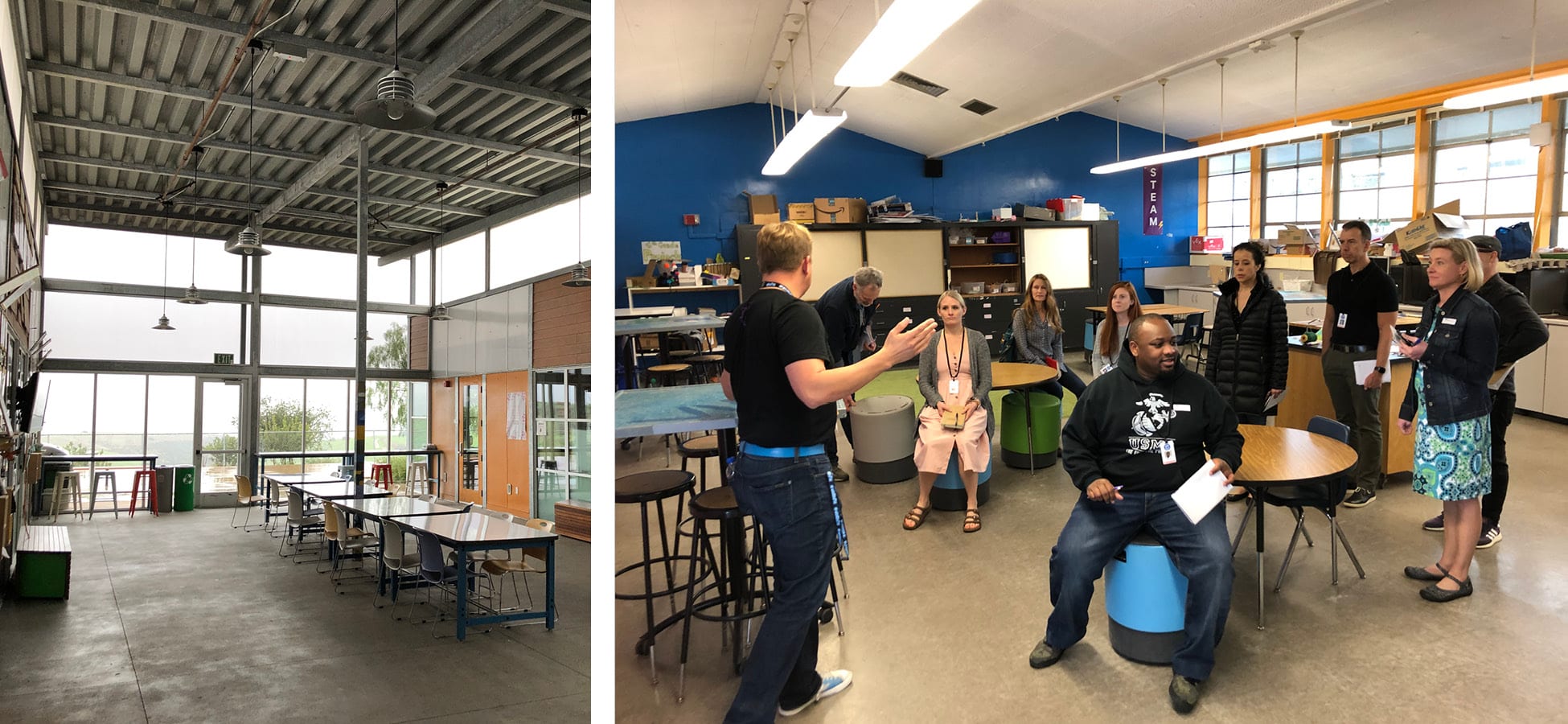
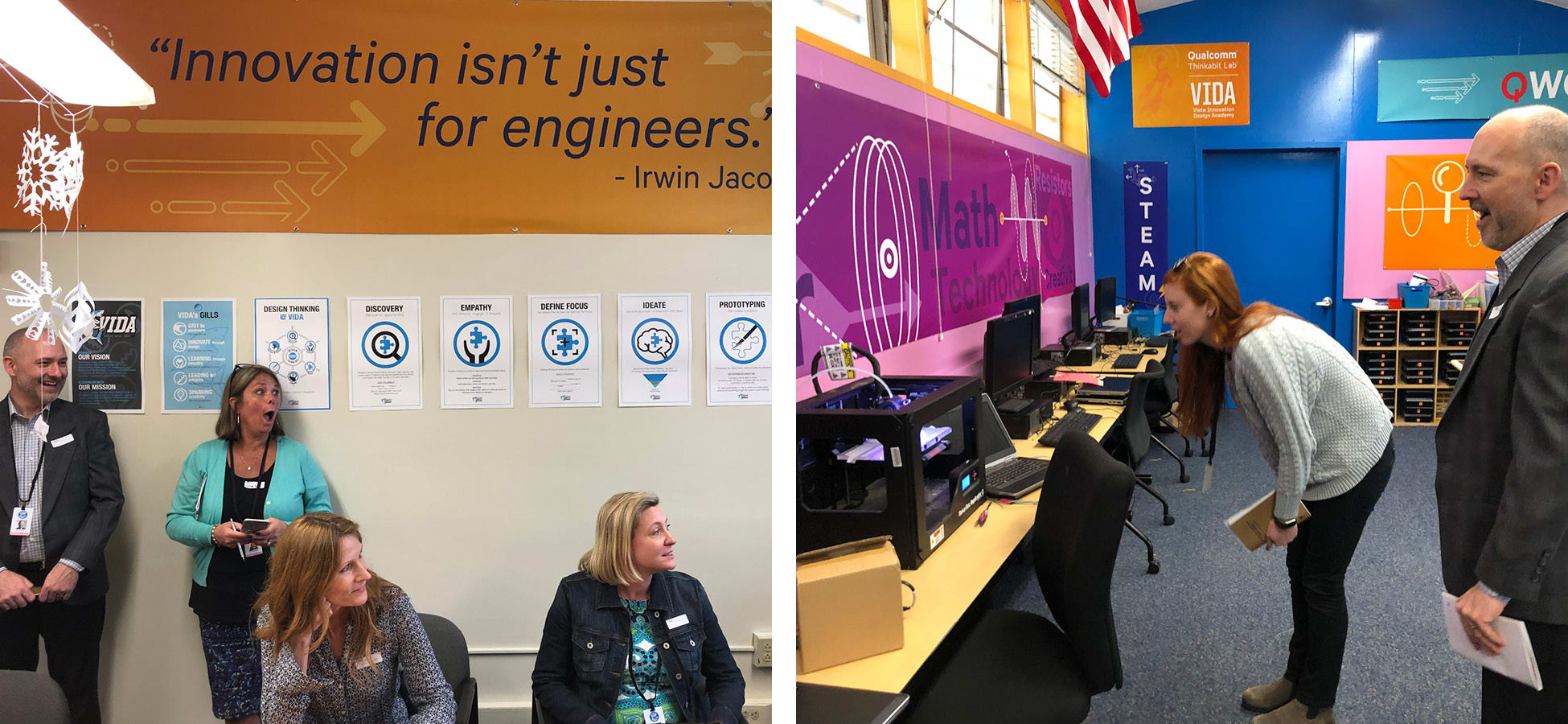
By Students for Students
We came back from this tour eager to apply and adapt the things we learned to the specific community of Oregon City and the curriculum developed by teachers and school leaders. Our goal was to build upon the best of what we saw while incorporating what we learned from students and educators in the Oregon City Community, creating new definitions of what student-centered spaces can be.
At both Gardiner and Tumwata, we convened a design committee that included 12 middle school students alongside educators and District leaders who were involved in every stage of the design process. Through their contributions, these schools are truly by and for the students they serve. This model was a direct result of what we learned at High Tech High – the importance and value of creating a truly student-focused environment.
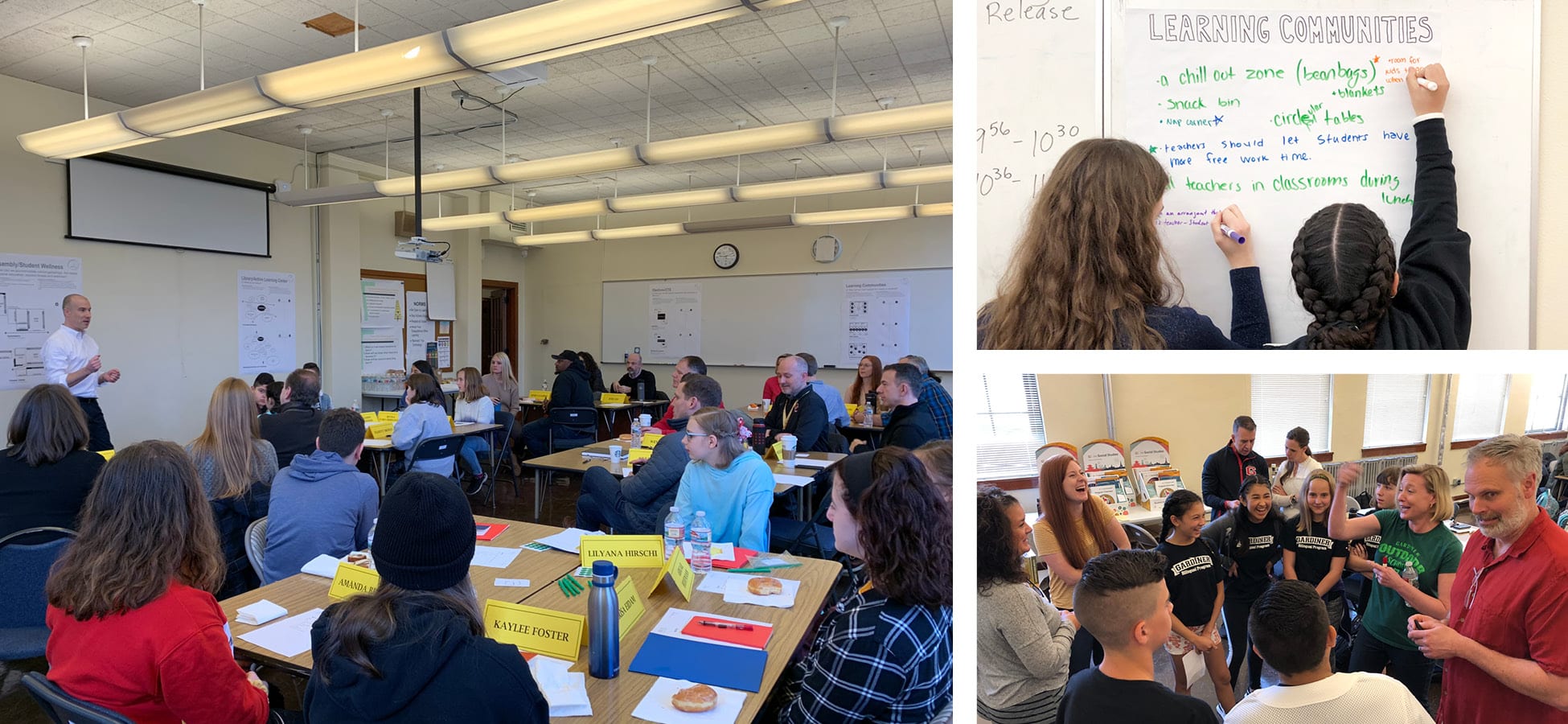
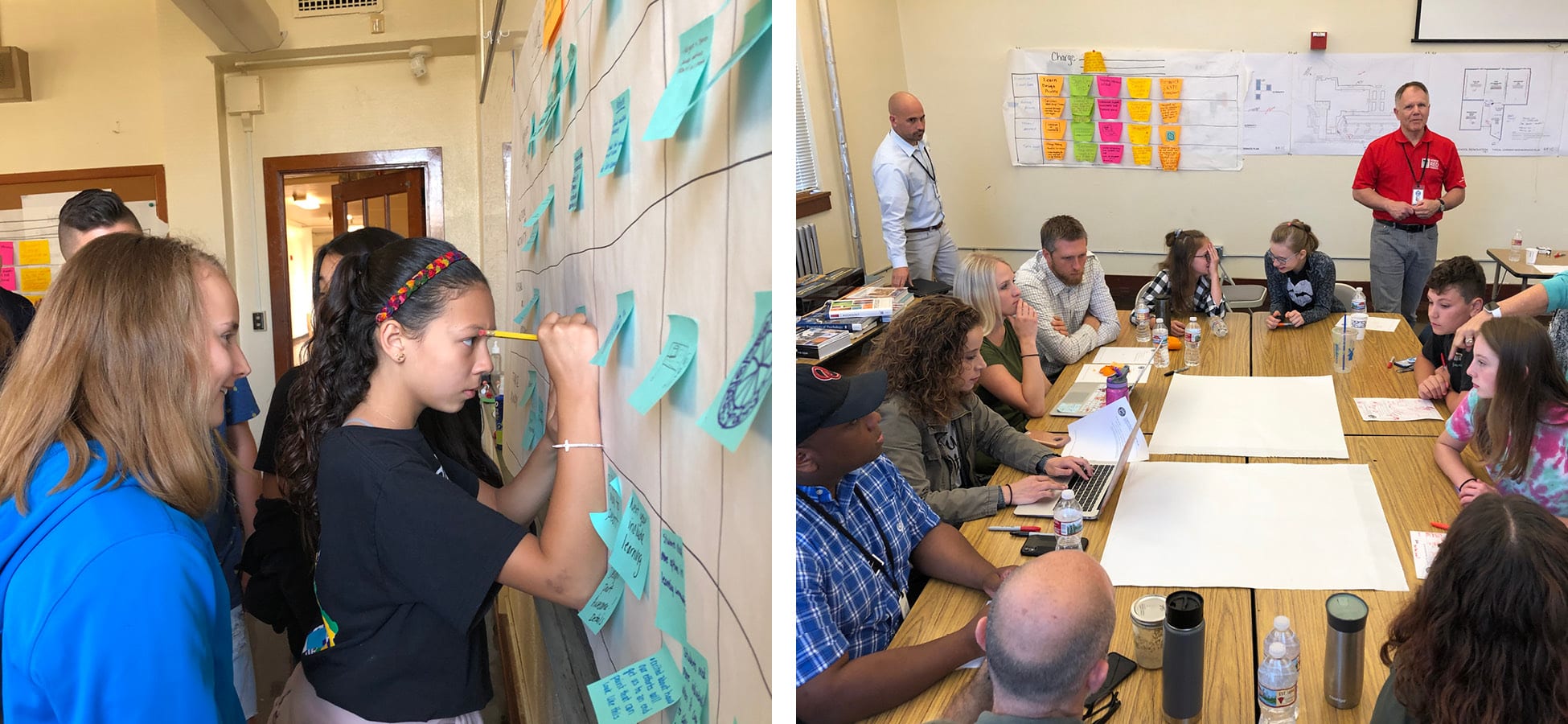
Gardiner features the central Timber Hall, a multiuse cafeteria/performance/gathering space shaped and named by the student members of the design committee and their peers. Located prominently and visible from main entrances to the school, this space provides multiple places for students to gather and decompress. Arranged around Timber Hall are a secure courtyard, covered outdoor dining area, various food delivery options, and a highly visible integrated maker suite with project display options celebrating student activity and work. Similar opportunities at the transformed Tumwata Middle School are in and around the Hub, a space which combines the cafeteria, an open library, and an outdoor area.
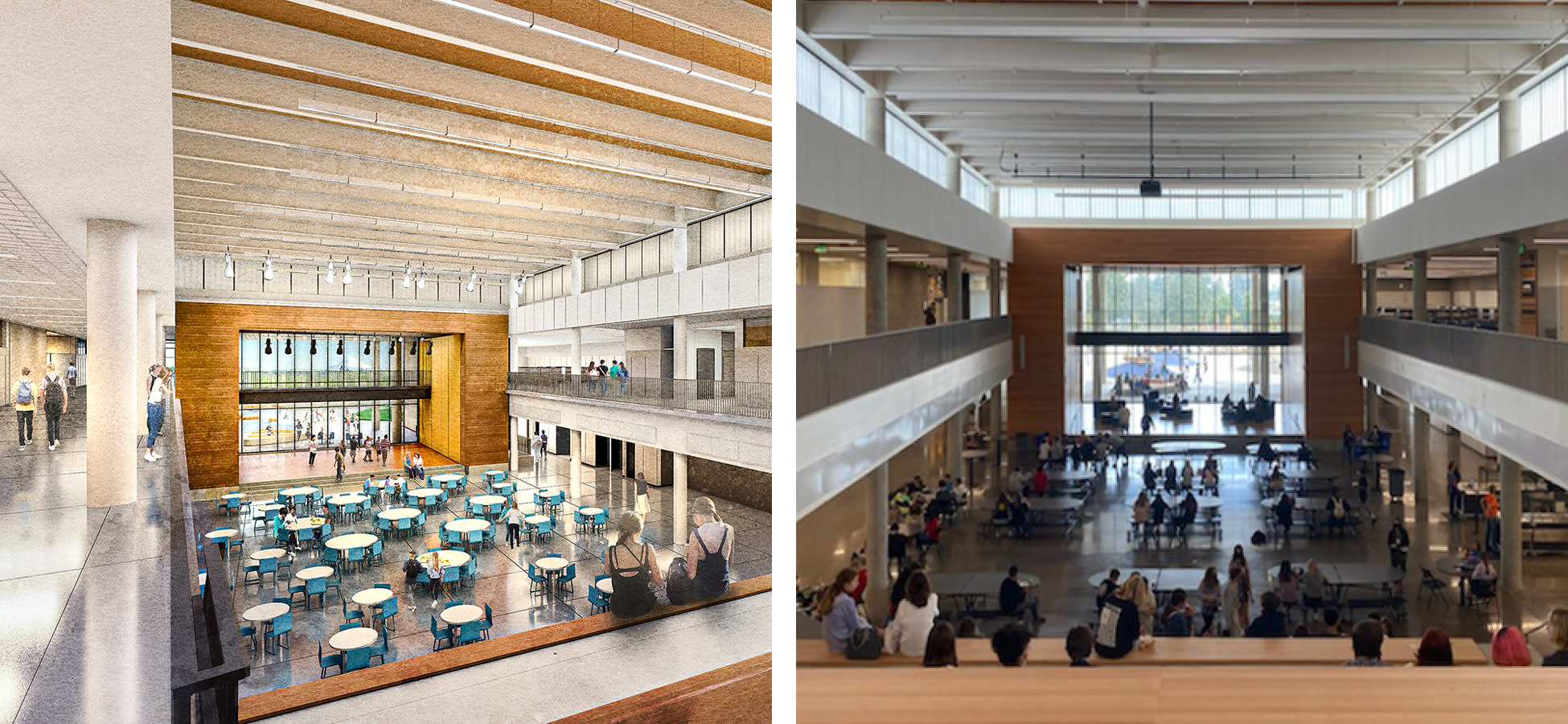
Making a Reconnection
Gardiner and Tumwata recently completed construction and we had the opportunity to do a photoshoot in early October. It happened to be scheduled on the same day as an educator’s professional development day at the school, involving Mike Strong of Blue Dot Education, a San Diego-based non-profit curriculum development consultant that worked on the High Tech High project. Mike is also a Director/Coach at the Construct Foundation and the Director of Professional Learning and Curriculum at Escondido Union High School District. Sarah Strong, a Teacher/Instructional Coach/Math Coordinator at High Tech High and Course Instructor at High Tech High’s Graduate School of Education, joined Mike in leading the workshops. We were thrilled to have made this connection with the team that had inspired us and to share with them what we created at Gardiner and Tumwata.
Our team is eager to continue learning from Sarah and Mike and understand more about what inspired them as they were working on High Tech High, what they have observed as they’ve conducted workshops at innovative schools throughout the country, and what they saw at Gardiner and Tumwata. We’re excited to implement the opportunities for exploration, deeper learning, and student engagement they see moving forward.
Continuing the Cycle of Continuous Learning
As designers, we are inspired and fulfilled by clients and partners who are looking to the future with an eye toward innovation and progress in the education and support of students. We seek out opportunities to learn and be inspired and hope that others see our work as a springboard. Together we look to craft rich, meaningful, and holistic educational experiences for students, educators, and communities. We benefited in immeasurable ways from Mike, Sarah, and others, learning from their efforts to advance pedagogy, student support, and the creation of truly innovative student-centered spaces. In some small way, we hope that our experiences working with students, teachers, administrators, and other collaborators in Oregon City – and everything we accomplished together at Gardiner and Tumwata – will inform the next iteration of education facility design.

